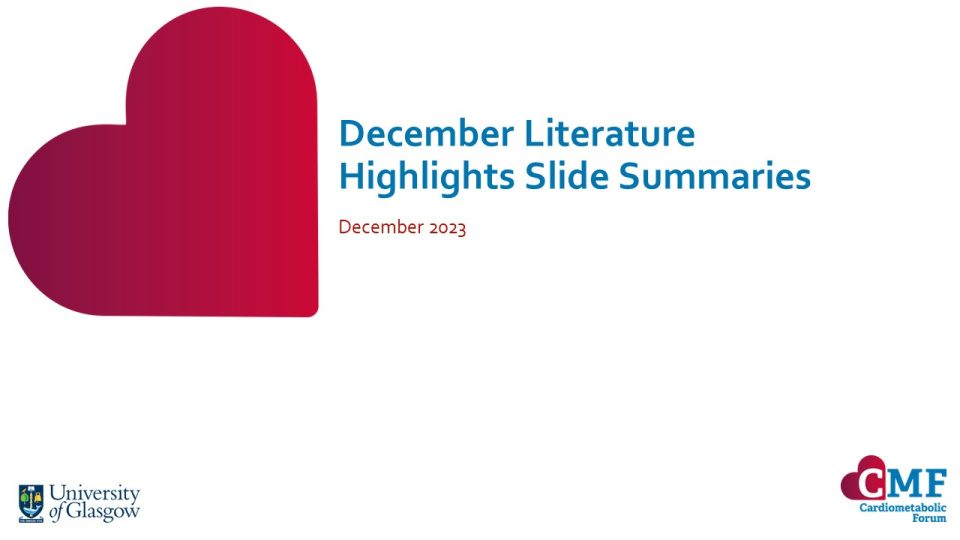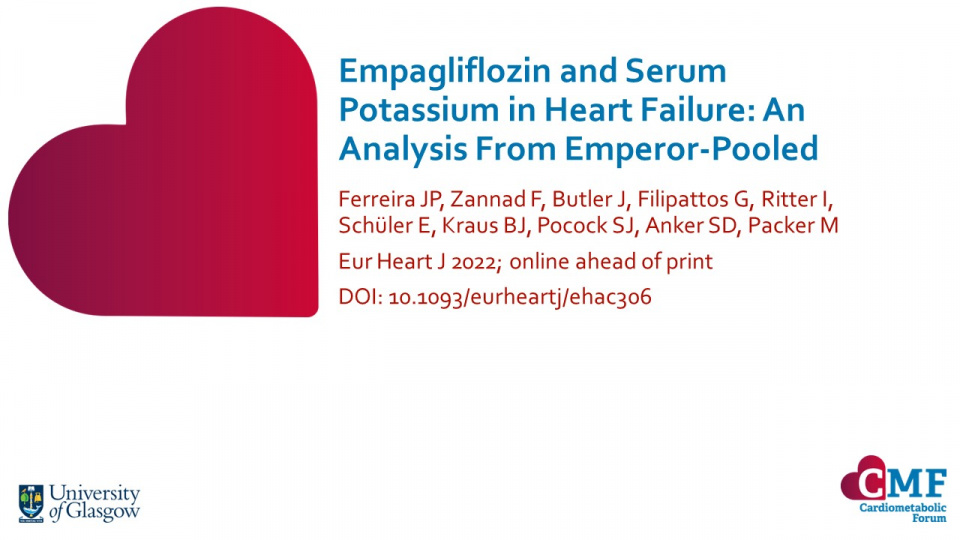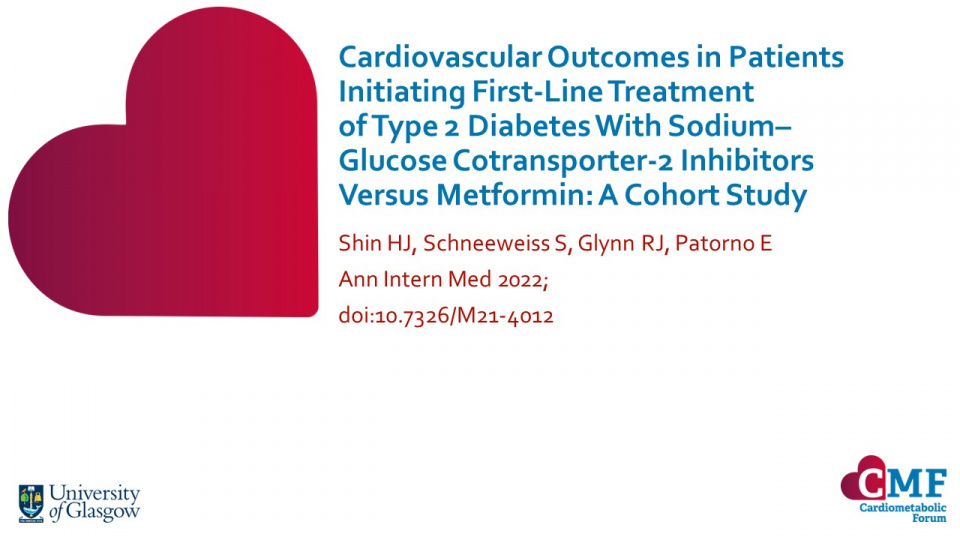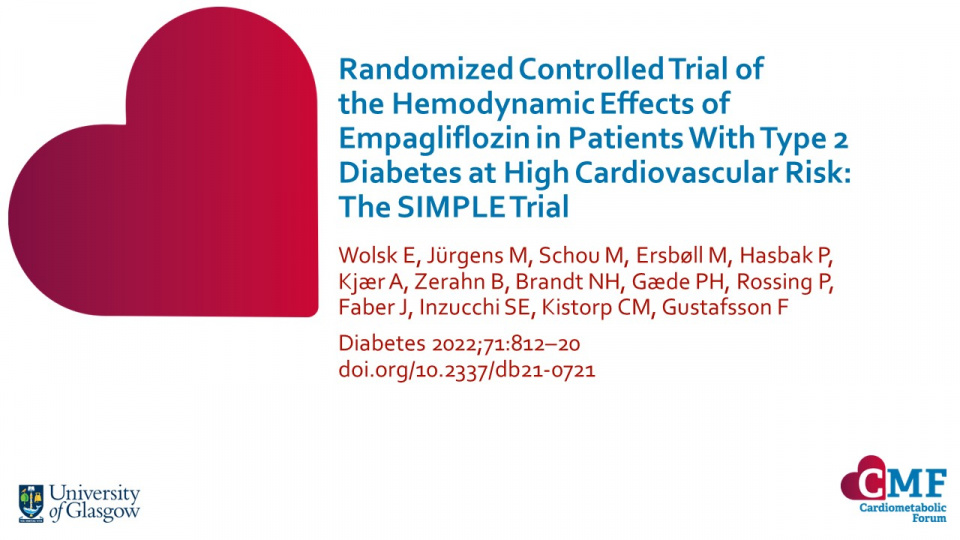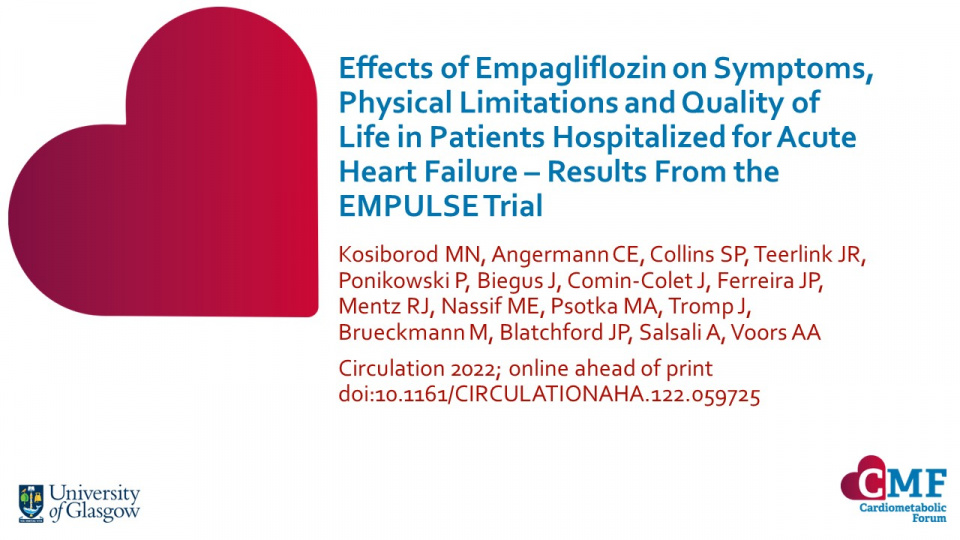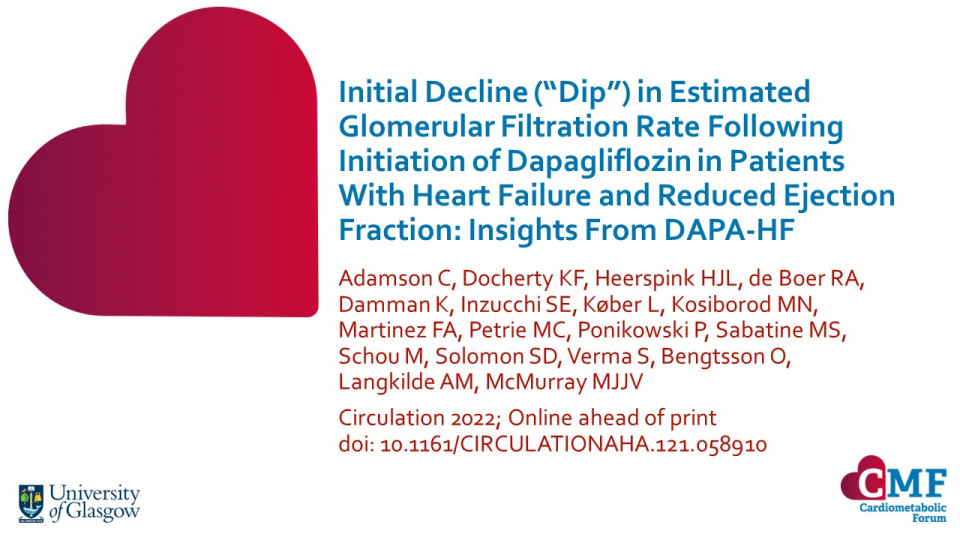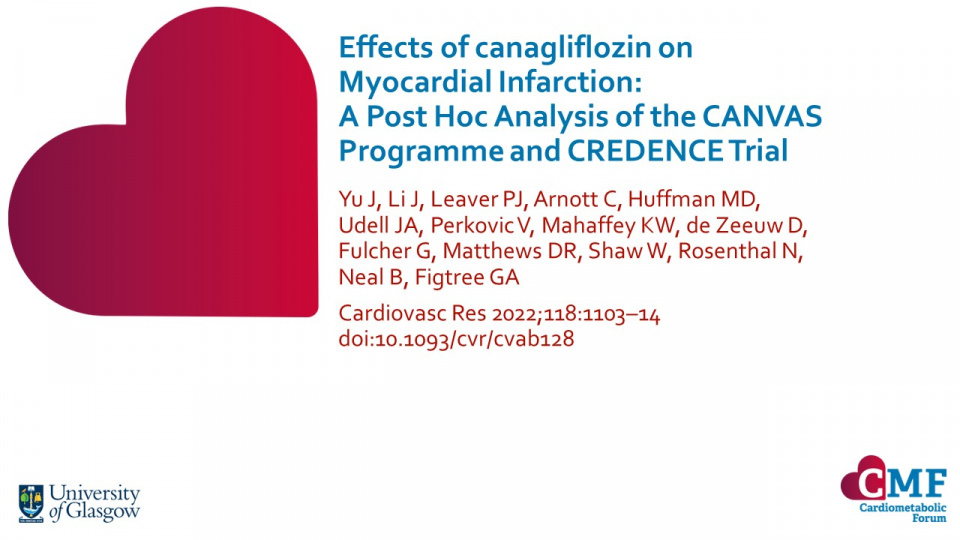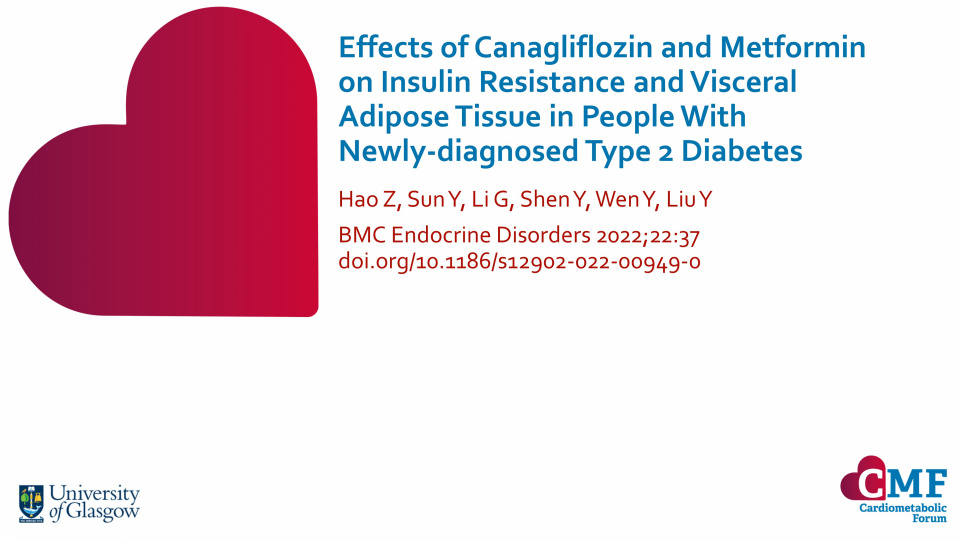Publications
Stay up to date with our literature reviews which are curated by experts to feature the most important publications released each month. Explore our publications for access to concise summary slides for your own use.
Empagliflozin and Serum Potassium in Heart Failure: An Analysis From Emperor-Pooled
Eur Heart J 2022; online ahead of print DOI: 10.1093/eurheartj/ehac306
In this pooled analysis, empagliflozin reduced the incidence of hyperkalaemia without significant increase in hypokalaemia.
Potassium is essential for normal cellular function, but severe potassium abnormalities can lead to cardiac arrhythmias and death. Hyperkalaemia frequently leads to interruption and discontinuation of neurohormonal antagonists, which may worsen the prognosis for people with heart failure (HF).
Cardiovascular Outcomes in Patients Initiating First-Line Treatment of Type 2 Diabetes With Sodium–Glucose Cotransporter-2 Inhibitors Versus Metformin: A Cohort Study
Ann Intern Med 2022; doi:10.7326/M21-4012
This cohort study found that those initiating a SGLT2i as their first-line treatment for T2D showed a similar risk for a composite outcome of MI, stroke, and mortality – and lower risk for a composite of hospitalisation for heart failure (HHF) and mortality. Compared with those receiving metformin as their first-line treatment, the SGLT2i safety profile was similar, except for an increased risk of genital infections.
Dose–Exposure–Response Analysis of the Nonsteroidal Mineralocorticoid Receptor Antagonist Finerenone on UACR and eGFR: An Analysis from FIDELIO‑DKD
Clin Pharmacokinet 2022; Ahead of print doi: 10.1007/s40262-022-01124-3
The results of this model-based analysis quantified the dose–exposure–response relationship for urine albumin-to-creatinine ratio (UACR) and estimated glomerular filtration rate (eGFR). Overall, the relationship between finerenone exposure and UACR and eGFR effects was not modified by sodium-glucose co-transporter-2 inhibitor (SGLT2i) use and demonstrated independent and additive effects.
Albuminuria-Lowering Effect of Dapagliflozin, Eplerenone, and Their Combination in Patients With Chronic Kidney Disease: A Randomized Cross-Over Clinical Trial
J Am Soc Nephrol 2022; ahead of print doi:10.1681/ASN.2022020207
This trial demonstrates that the albuminuria-lowering effects of dapagliflozin and eplerenone alone are additive when used in combination. A larger trial in this population is required to confirm long-term efficacy and safety of combined sodium-glucose co-transporter-2 inhibitor (SGLT2i) and mineralocorticoid receptor antagonist (MRA) treatment, but this may support the idea that these classes have complementary nephroprotective effects.
Randomized Controlled Trial of the Hemodynamic Effects of Empagliflozin in Patients With Type 2 Diabetes at High Cardiovascular Risk: The SIMPLE Trial
Diabetes 2022;71:812–20 doi.org/10.2337/db21-0721
In this analysis of data from the SIMPLE trial, empagliflozin did not reduce left heart filling pressure more than placebo at submaximal exercise in patients with T2D at high CV risk. However, it was observed that empagliflozin reduced pulmonary capillary wedge pressure (PCWP) at a magnitude of clinical significance in patients at rest. The findings suggest cardiac benefits beyond the diuretic effect of sodium-glucose co-transporter-2 inhibitor (SGLT2i) treatment and could explain a significant part of the CV benefits observed in clinical trials.
Effects of Empagliflozin on Symptoms, Physical Limitations and Quality of Life in Patients Hospitalized for Acute Heart Failure – Results From the EMPULSE Trial
Circulation 2022; online ahead of print doi:10.1161/CIRCULATIONAHA.122.059725
This post hoc and prespecified analysis of the EMPULSE trial found that initiation of empagliflozin in patients hospitalised for acute heart failure (AHF) produced clinical benefit regardless of the degree of symptomatic impairment at baseline. Empagliflozin also improved symptoms, physical limitations, and quality of life – with benefits seen as early as 15 days and maintained through 90 days.
Initial Decline (“Dip”) in Estimated Glomerular Filtration Rate Following Initiation of Dapagliflozin in Patients With Heart Failure and Reduced Ejection Fraction: Insights From DAPA-HF
Circulation 2022; Online ahead of print doi: 10.1161/CIRCULATIONAHA.121.058910
The results of this subgroup analysis from DAPA-HF show that – although estimated glomerular filtration rate (eGFR) decline is generally associated with poorer prognosis in most situations – an initial dip with a sodium-glucose co-transporter-2 inhibitor (SGLT2i) may be associated with slower rate of decline in kidney function.
Effects of canagliflozin on Myocardial Infarction: A Post Hoc Analysis of the CANVAS Programme and CREDENCE Trial
Cardiovasc Res 2022;118:1103–14
Yu et al. report that canagliflozin is not associated with a reduction in overall myocardial infarction in the pooled CANVAS and CREDENCE population. The CANVAS cohort found a possible differential effect on ST-elevation myocardial infarction (STEMI) and non-STEMI warranting further investigation.
Cardiovascular Outcomes with Finerenone According to Glycemic Status at Baseline and Prior Treatment with Newer Antidiabetics among Patients with Type 2 Diabetes Mellitus
Endocrinol Metab 2022;37:170–4; doi.org/10.3803/EnM.2021.1296
Finerenone induced a 13% risk reduction in MACE (a composite of death from CV causes, nonfatal myocardial infarction, nonfatal stroke, or hospitalisation for heart failure) regardless of prior glycaemia. There was no difference in finerenone-derived MACE benefits whether patients were on baseline SGLT2i or GLP-1RA or not.
Effects of Canagliflozin and Metformin on Insulin Resistance and Visceral Adipose Tissue in People With Newly-diagnosed Type 2 Diabetes
BMC Endocrine Disorders 2022;22:37 doi.org/10.1186/s12902-022-00949-0
In this study of patients with newly-diagnosed (<6 months) T2D, canagliflozin was associated with reduced insulin resistance and visceral adipose tissue compared with placebo.

